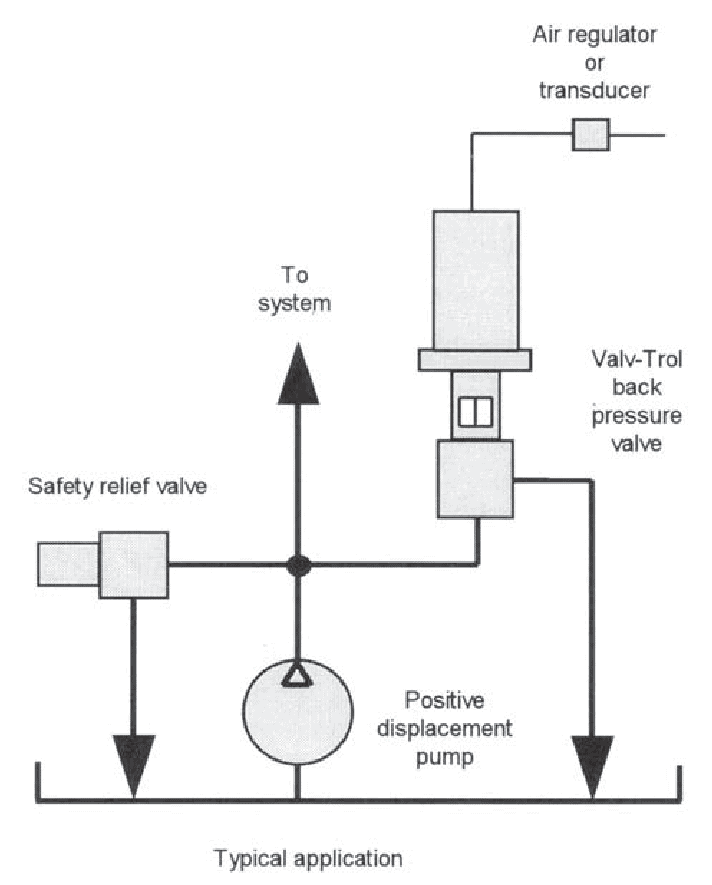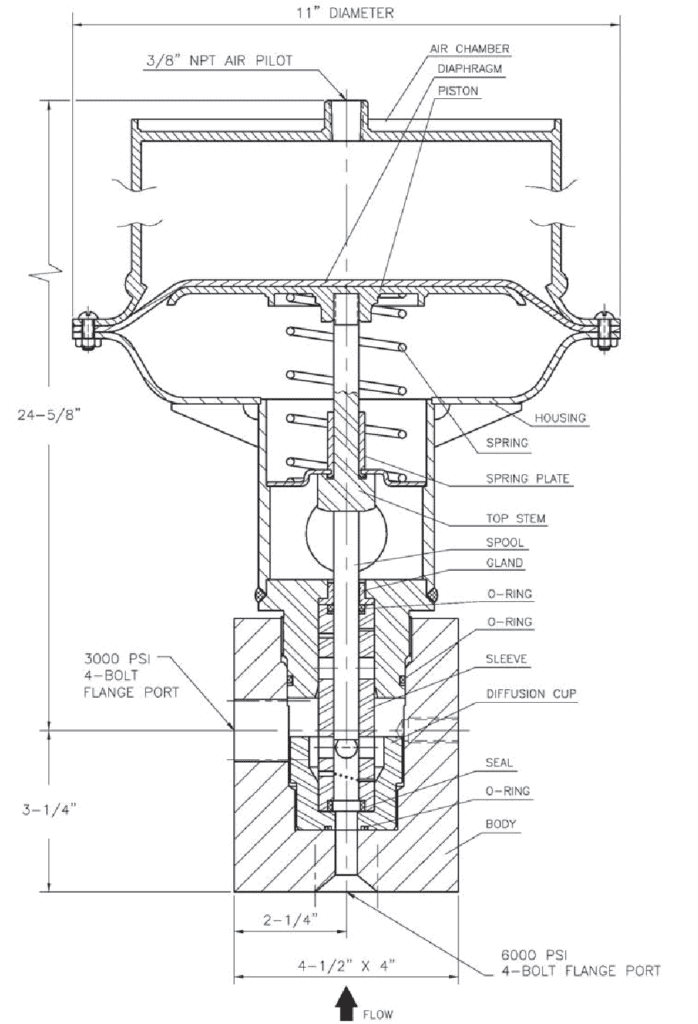Back Pressure Relief Valve
Specializing in standard and custom high pressure valves for
water hydraulics and other high pressure water systems.
water hydraulics and other high pressure water systems.
BACK PRESSURE RELIEF VALVES
FOR WATER, 95/5, OIL OR OTHER LIQUIDS PRESSURES
TO 25,000 PSI (1,724 Bar)

The Valv-Trol Back Pressure Relief Valve is sometimes called a Back Pressure Regulator or Bypass Valve. It is used to regulate the discharge
pressure of a positive displacement pump
The valve is mounted in a branch off the main discharge pipe, and acts as a
modulating relief valve. If pressure tries to rise above the set point, the valve
relieves only enough fluid to prevent a pressure rise. This is accomplished
without the full lift and excessive blowdown of a spring loaded relief. The valve comes complete with precision air regulator or pressure transducer and does
not require any outside controller or feedback loop.
Ideal for applications requiring pressure regulation with large or
frequent flow variations.
Wide range of optional features, such as body and trim materials,
port connections, flow rates, and pressure ratings.
Allows you to choose the best valve for your application.
Allows you to choose the best valve for your application.
The valve is simple in concept
.Requires no special tools for maintenance.
.Requires no special tools for maintenance.

Our valves are all subjected to 100% pressure
testing to ensure proper operation before
we ship to our customers.
BACK PRESSURE RELIEF VALVES
bulletin A-33

Illustration shows a typical valve. Please consult Valv-Trol for other features not shown.
BACK PRESSURE VALVES—PRINCIPLE OF OPERATION
The valve operates by balancing the liquid system pressure and a constant air pressure applied to the diaphragm
by the precision regulator. An internal spool is positioned to adjust the effective orifice size for proper flow
The pump is usually oversized slightly to allow some bypass flow through the valve under normal conditions. Once
the pump is running and a constant air pressure is applied, the spool finds its balancing point, and the pressure
stabilizes. The higher the air pressure, the higher the liquid system pressure
If system demand increases (more nozzles added, valves opened, etc.), the spool moves down to close off more
holes and prevents a pressure drop. If system demand decreases, the spool moves up to open more holes and
prevents a pressure rise..
THE VALV-TROL CO., STOW, OHIO

